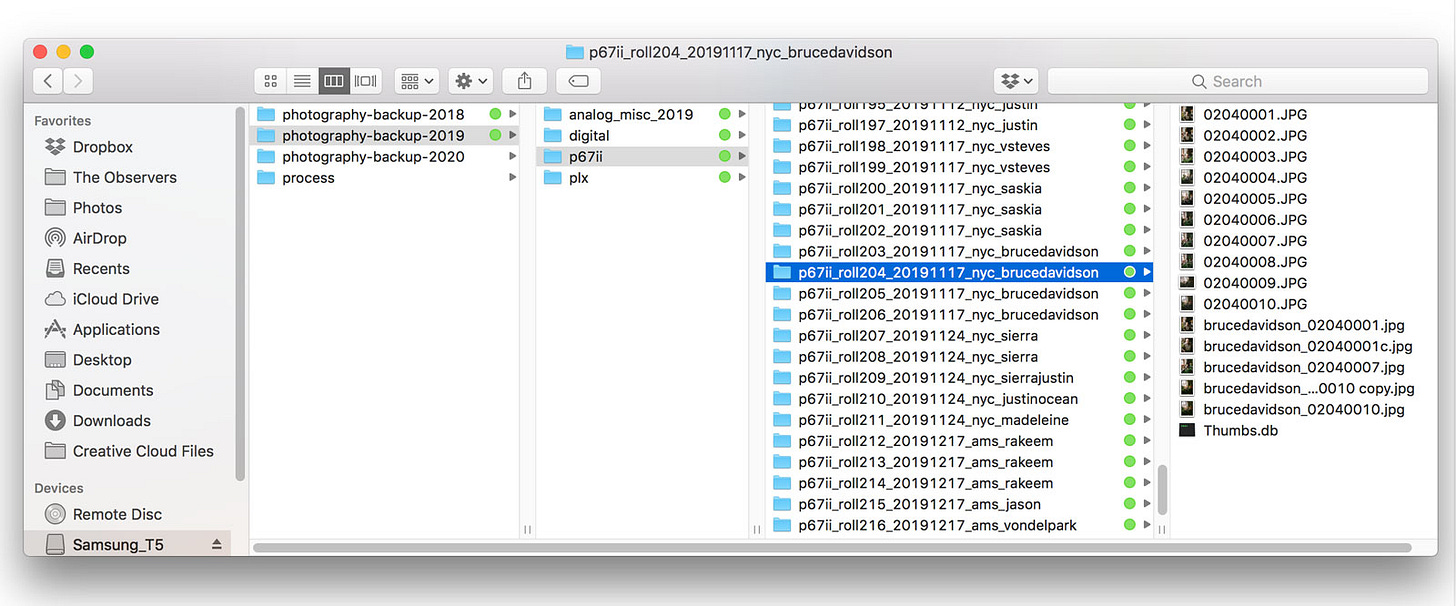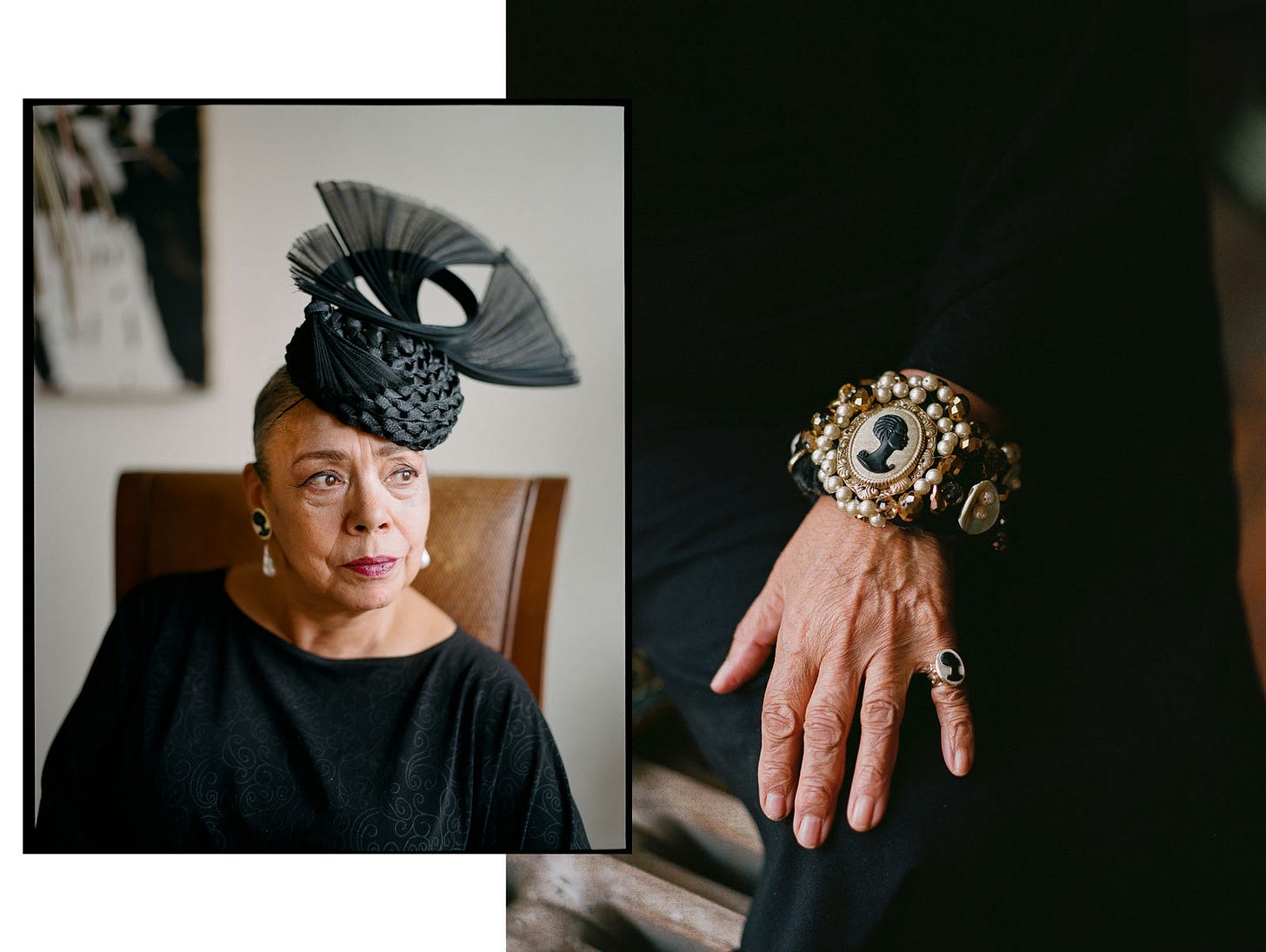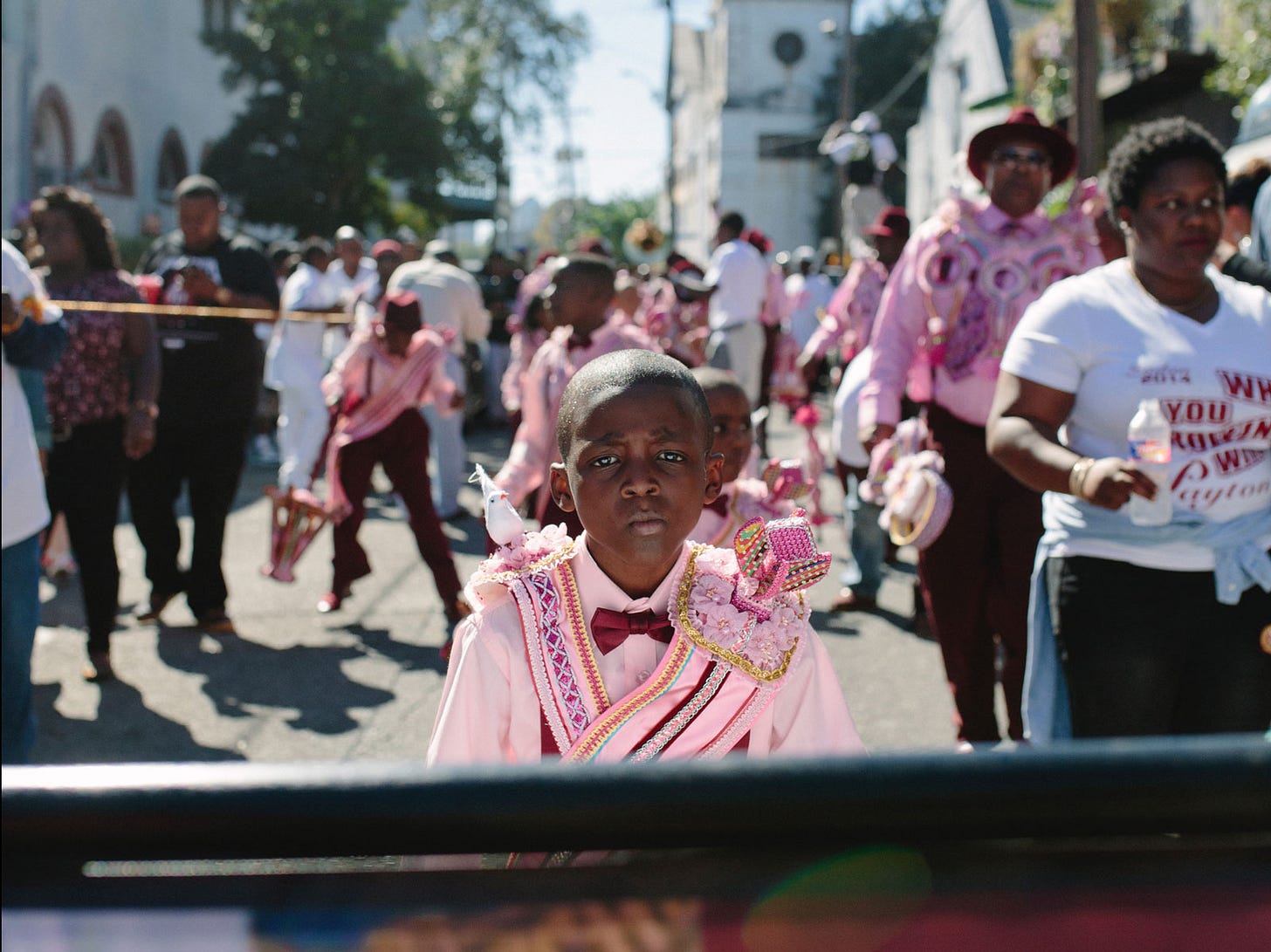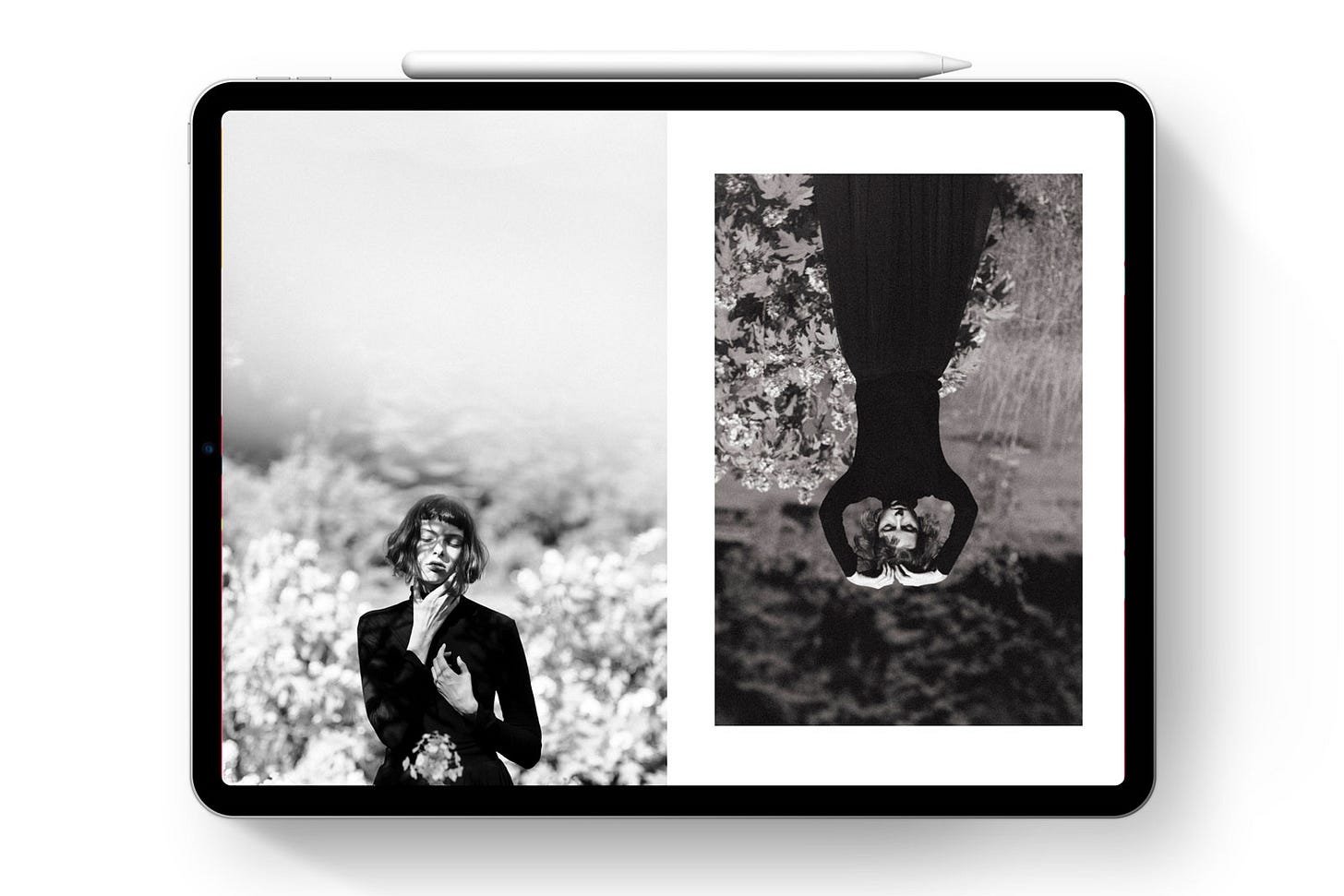Process 002 ☼ How I Created My New Photography Portfolio
A six step approach to making a portfolio from scratch.
Friends,
I hope you are all safe and healthy. What a crazy place the world has turned into since the last time we spoke. My hope is that, when possible, you’ve been turning to photography to document this time in your life.
Your response to the inaugural issue of Process was incredibly kind. A special thanks to all of you who answered my question: ‘Why is photography important to you?’ I’ve included a number of your responses at the end of this note.
Before we dive in, let me address the elephant in the room:
Does this newsletter only come out twice a year?
No — starting with this issue I will send a new Process note twice a month, as was my original plan.
Thanks for hanging in there as I took the time I needed to wrap my head around how to do this and when. This issue is about the process of portfolio building.
I have used my time in lockdown to dig deeper into my photography practice by studying, organizing, and developing new projects and relationships. The first thing I did was finalize my new editorial portrait portfolio.
This was all prompted by a meeting I had a few months ago. I was invited by a kind photo editor at a New York City news organization to come by the office and show my work. My work had evolved a lot since the last portfolio I compiled, so I took the opportunity to build a new one.
There are a number of considerations when building a portfolio. As I found myself going through them I took notes so I could share my process with you (I know — cheesy italics there).
Step 1 — Who is this portfolio for?
The most important question to start with is: Who is the intended audience for this portfolio? What kind of images would be most helpful for them to see?
A newspaper editor, an editorial magazine editor, and a commercial art director each have different photo needs. This means sometimes we may have to leave out images we love, because they do not fit the purpose of that particular portfolio.
Also, time is precious for everyone, and the people listed above especially have no time. The person seeing your portfolio is operating under many different deadlines.
What I did:
I was showing my work to a photo editor who may have the opportunity to assign an editorial portrait shoot of a notable person being profiled. This meant I would focus on choosing portraits a little bit more on the artistic side, as opposed to straight up documentary style or clean headshots.
Step 2 — Make a first selection of images
Now that we know who our intended audience is, we have a rough idea of which work we should consider for the portfolio and which gets cut right away.
What I did:
I went through many folders and several thousand images to collect about 120 of my favorites in a folder and let those sit there for a few days before coming back to them with a fresh eye. Over the course of several days I continued cutting the folder down to about 80 images.
In this case, none of my commercial work was relevant, no fine art work, and less of my long form journalism.
Next, I cut another batch of images out by deciding to focus on work shot during the last year or so. My archives are organized chronologically, per shoot, and per camera, so it didn’t take much time at all to narrow down which folders I would be pulling from.
Step 3 — Get feedback from friends
After a while it’s hard for anyone to distinguish between good images, and images that make them feel good, because of the associated memory of making the image.
It was time to bring in some fresh eyes.
What I did:
I asked five friends to take a look at my folder of images and give me feedback. I made sure they knew what the goal of this portfolio is and who I was showing it to.
I asked some photographer friends, but also made sure to ask some other people outside of my photography circle, whether they worked in a creative field or not.
When possible, I tried to sit down with everyone in person (before COVID-19), or on video chat (for the foreseeable future). It is helpful to see body language and how long someone’s eye lingers on a specific image.
When multiple people pointed out a picture they loved, it stayed. But even more importantly, if they didn’t respond to a picture that was special to me, I learned that it might have an aforementioned emotional memory and I should probably cut it.
After each feedback session, I removed a few images and I added in one or two to provide more balance. At the end of this step, I was left with a folder of about 60 images for the main portfolio.
Step 4 — Sequence and layout
Next up, it’s time to move the images out of a folder and into a more elegant way of presenting the work, whether that’s a website, a PDF, or a slideshow.
What I did:
There are multiple online platforms and pieces of software to create a portfolio, and most of them are totally fine. I kept it simple and laid this portfolio out in Keynote, which is Apple’s version of Powerpoint, and exported it as a PDF. I later used Docsend to create and send out the online version of the portfolio.
During the process of sequencing and laying out the images, you will find there are still more to cut. Some images will show themselves to be too similar or fill the same role in the portfolio. Others might not fit when looking at the portfolio as a complete body of work.
The order of images is important as well. You always want to start strong and with something that is very representative of your work. Everything after that has to flow nicely like a photo book would. My friend Anneloes suggested I experiment by placing two images side by side in the lay out, rather than using a full page for each image. This gave an entirely new boost to some of the work and helped me cut some more and actually bring back a few images I previously cut. Sometimes two unrelated images amplified each other, other times two related images created a greater context.
By the end of this process, I was left with 44 final images for the main editorial portrait portfolio. I decided to add two short sections at the end to showcase some work I shot in New Orleans during a Second Line, and a set of street portraits from my travels. My goal with these extra sections was to show my serialized documentary portrait work and how it relates to my posed portraiture. I share a link to the full portfolio below, but let’s keep reading for now.
Step 5 — Show the work
Now I had the confidence that the portfolio was ready to be shown.
What I did:
I chose to use an iPad rather than a printed portfolio book. A printed portfolio can at times make a bigger impact, but it’s time consuming and quite expensive, and not a total must.
I prefer the passive approach to showing my work, which means I let the other person determine how much time we spend with each image and how fast we go. Sometimes a photo might inspire a question about the person, location, or project. This is an opportunity to give additional background on how you work and what your strengths are.
If you cannot meet in person, then use a service like WeTransfer to send over a PDF, or better yet a website. Never send big attachments in an email.
The Result
The meeting went well and the feedback was positive. After we finished looking through the portfolio I took the opportunity to ask a few questions: Did the editor feel anything was missing? Would cutting certain images improve the portfolio?
I was also able to show the editor a few additional images to get their thoughts on whether they would recommend including them. This was an extra ask on my part, bonus time, and that was possible because the atmosphere was good and the work was well-received. It’s not something you can count on happening, but when it does it can be incredibly helpful.
A few weeks later I met with another editor at the same news organization and her feedback was incredibly helpful in pushing me to grow. She encouraged me to start working with an eye on building larger bodies of work and series that speak to old and new ways we are living life, to tell a larger story. I loved that and am working on this now.
My mindset when going in for a portfolio review is that first and foremost I am hoping to get feedback and professional thoughts on my work, so I can keep improving. Next, I am excited to get to know the person I’m meeting with and whose work I respect. They have taken time out of their schedule to look at my work, and that is exciting to me on an inspirational level.
Something I’d love to emphasize:
Note that my primary focus was not to get work out of the meeting. Of course I would love that, but I look at an assignment as a big cherry on top. If you walk into a meeting only thinking about making the sale it can create a more transactional and nervous atmosphere and a fear of failing.
It’s not a failure as long as you walk away with some new insights into your own work. This is a life-long craft and I believe your time will come if you keep at it.
Step 6 — Finalize and follow up with a ‘thank you’
Thank you notes are nice.
What I did:
I always send a polite and short thank you follow up when someone has taken the time to help me gain insight into my own work and ways I might be able to improve. In this case, I was able to include a tweaked portfolio showing the feedback received was taken seriously.
If the editor or art director enjoyed the meeting and the work, a polite follow up will also show them you have proper manners and are a professional. This means when there is an appropriate opportunity that passes their desk, you have given them every indication that they might want to take a chance on working with you, which is that big bonus I mentioned before.
That’s it.
Now, would you like to see my new portrait portfolio? Click below:
Wesley Verhoeve - Portrait Portfolio 20200406
Lessons Learned
Target: Tailor your portfolio to the person or organization you’re presenting the work to.
Selection: Only show the kind of work you want to get hired for. If you want to be hired to shoot commercial sneaker campaigns, don’t show your landscape work even if it’s your best. Be ruthless in your edit. It’s better to have a portfolio of 10 good images than one of 10 good ones plus 10 ok ones.
Sequence: Start with your strongest work. Consider pairing your images in elegant and powerful ways.
Feedback: Ask feedback from visual creatives as well as “regular” people without a visual background.
Present: Show the work and take notes. Pay attention and think through the feedback.
Gratitude: Finalize and follow up with a ‘thank you’
And you know, to top this off with fatherly reminders:
Be on time (aka early and wait outside until it’s time), bring your ID in case there is a security check-in for visitors (not uncommon in NYC especially).
Make sure the tablet or laptop is fully charged, the file properly loaded, and you have a back up if possible. I brought my laptop as a back up. If you don’t have a laptop or tablet, ask if you can send over a web link to look at together on theirs.
Ask for actual feedback about specific images if you have doubts about them. You’re there to learn.
Show gratitude in your follow up and show what you’ve learned when appropriate.
Portfolio Review for You
Now it’s YOUR TURN to build a new portfolio, and here is where I can help. I will do a portfolio review Zoom session with the first three people to respond with their answer to the question:
Why is photography important to you?
Many of you replied last time with thoughtful answers. I have included three at the bottom of this letter and will continue to share more as we go on. (If you already sent me your answer but would still like to enter the portfolio review, just reply by saying that.)
Waving from a quiet Vancouver,
Wesley
PS Would you like to help me decide what to write about? I have created a public Google Doc listing topics I plan on covering and you can leave your suggestions there. I will add the best ones to the Google Doc, with credit, as they come in. I would love to hear your thoughts.
Why is photography important to you?
“Everything changes and I have trouble accepting that. Photography is my way of keeping people, a place a sensation or a memory forever. It's easier for me to see evolution when you have it documented.” — Alba Vaur (Barcelona, Spain)
“Photography is a doorway. To places I – physically and emotionally – wouldn’t have found the courage for before finding my camera.” — Roos Klein (Utrecht, the Netherlands)
“Photography is important to me because it is a comfortable place for me to be quiet and observe. Which is a huge part of my personality. It lets me be me.”— Michael Tucker (New Orleans, USA)
If you haven’t written me yet with your answer and feel the urge, please do. It’s a great way to get to know each other, and I like hearing from you.
Process is a bi-weekly letter from Wesley Verhoeve.
Issue 003 will probably be about my daily noticing walks as seen on my IG story over at @wesley.
If your creative friends would enjoy Process, please send it to them and I’ll be eternally grateful.
The images in this issue were developed and scanned by Bleeker Digital in NYC and
Cameras/Lenses Used: Pentax 67ii (105mm) + Pentax LX (50mm) + Canon 5D (24-70mm) + iPhone Xs Max.
Film Stock: Kodak Tri-X 400, Portra 160/400, TMax 400.






Hi Wesley,
Great article, came looking for words of wisdom here, really appreciate you sharing all this information. Photography is a hobby which I hope it turns to be a way of life later in life. Sometimes I get desperate because I think I don't feel like i'm growing at all, and make me feel like abandoning it all. But need to be patient.
Thanks again,
Damian
In addition to a way of expression, capturing the macro physical world forever in a frame is as exciting as life itself.